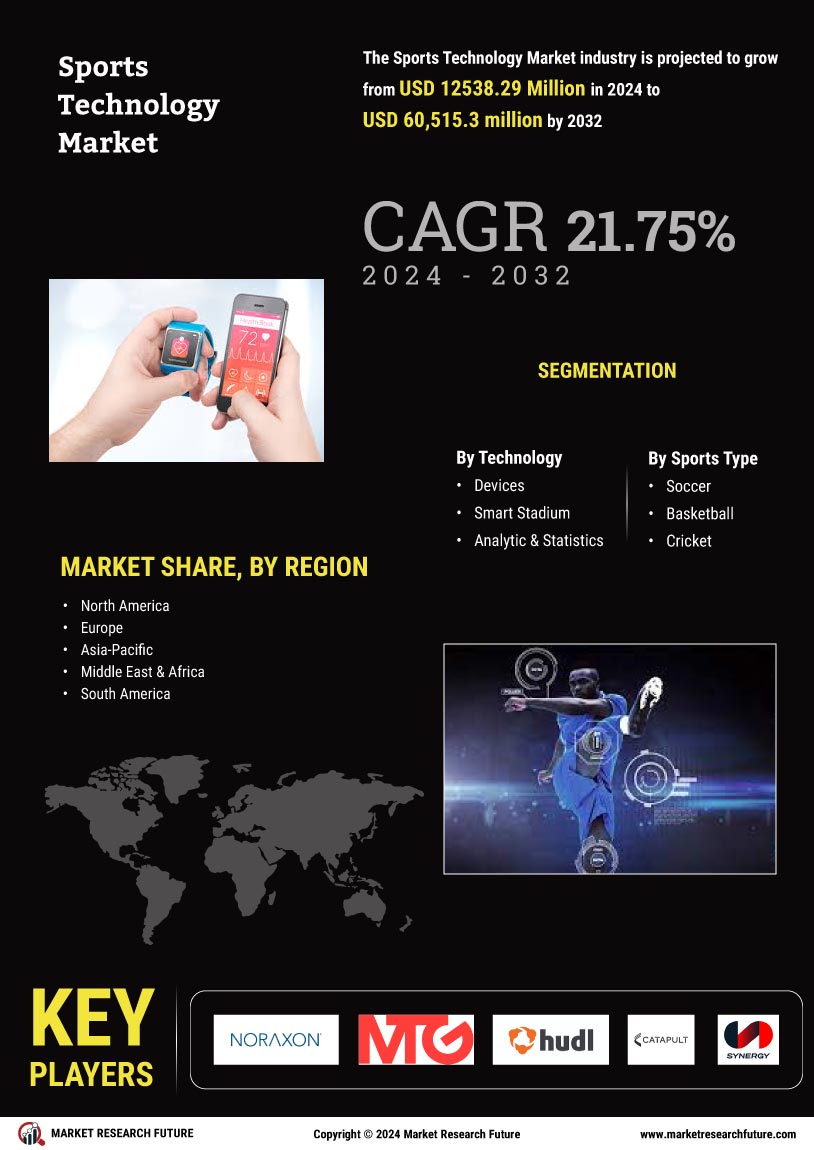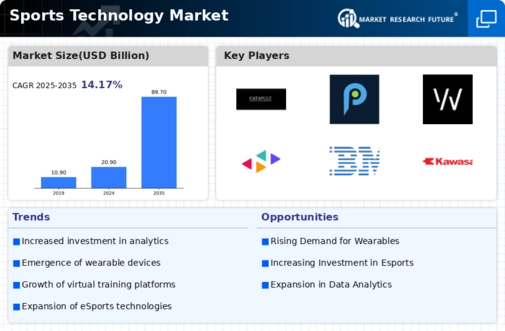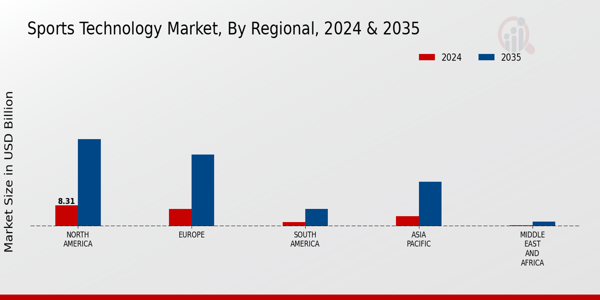Market Growth Projections
The Global Sports Technology Market Industry is poised for substantial growth, with projections indicating a rise from 20.9 USD Billion in 2024 to 89.7 USD Billion by 2035. This trajectory suggests a compound annual growth rate of 14.15% from 2025 to 2035, reflecting the increasing integration of technology in sports. The growth is driven by various factors, including advancements in wearable technology, data analytics, and the rising popularity of esports. These elements collectively indicate a dynamic and evolving market landscape, where technology continues to redefine the sports industry.
Technological Advancements
The Global Sports Technology Market Industry is experiencing rapid growth driven by continuous technological advancements. Innovations in wearable technology, such as smartwatches and fitness trackers, enhance athlete performance monitoring and injury prevention. For instance, devices that track biometric data provide real-time insights, allowing coaches to make informed decisions. The market is projected to reach 20.9 USD Billion in 2024, reflecting a growing demand for these technologies. As athletes and teams increasingly adopt these tools, the industry is likely to see a surge in investment, further propelling growth and innovation.
Health and Fitness Awareness
The increasing awareness of health and fitness is a significant driver of the Global Sports Technology Market Industry. As more individuals prioritize physical well-being, the demand for fitness-related technologies, such as mobile applications and wearable devices, continues to grow. This trend is reflected in the projected compound annual growth rate of 14.15% from 2025 to 2035, indicating a sustained interest in health-oriented technologies. The proliferation of fitness challenges and community-driven initiatives further encourages technology adoption, suggesting that the market will continue to expand as consumers seek innovative solutions to enhance their fitness journeys.
Growing Popularity of Esports
The rise of esports is reshaping the Global Sports Technology Market Industry, as it creates new opportunities for technology integration. With millions of viewers and participants worldwide, esports requires advanced technology for streaming, analytics, and player performance tracking. This segment is expected to drive significant growth, as companies invest in platforms that enhance user experience and engagement. The increasing popularity of esports events suggests a shift in how technology is utilized in traditional sports, potentially leading to a more tech-savvy audience and innovative solutions tailored to this demographic.
Increased Investment in Sports
Investment in sports technology is on the rise, significantly impacting the Global Sports Technology Market Industry. Organizations and teams are allocating substantial budgets to enhance performance and fan engagement through technology. This trend is evidenced by partnerships between sports teams and tech companies, aimed at developing cutting-edge solutions. The anticipated growth to 89.7 USD Billion by 2035 indicates a robust commitment to integrating technology into sports. Such investments not only improve athletic performance but also enhance the overall spectator experience, suggesting a dual benefit that could attract further funding.
Data Analytics and Performance Optimization
Data analytics plays a crucial role in the Global Sports Technology Market Industry, as teams leverage data to optimize performance and strategy. Advanced analytics tools enable coaches and athletes to analyze game footage, track player statistics, and assess opponent strategies. This data-driven approach enhances decision-making processes and can lead to improved outcomes on the field. As the market evolves, the integration of artificial intelligence and machine learning into analytics tools is likely to further refine performance optimization, suggesting a transformative impact on how sports are played and managed.

























Leave a Comment